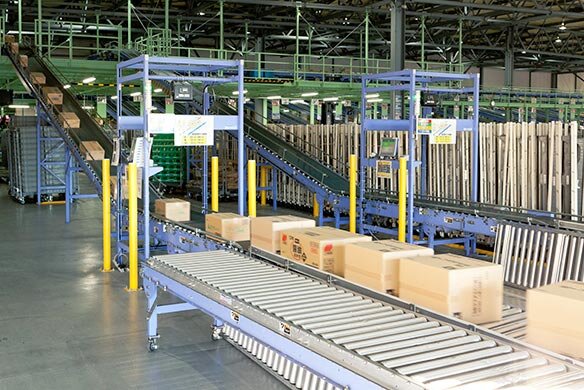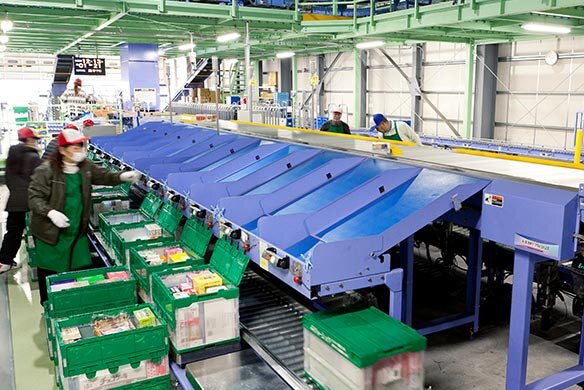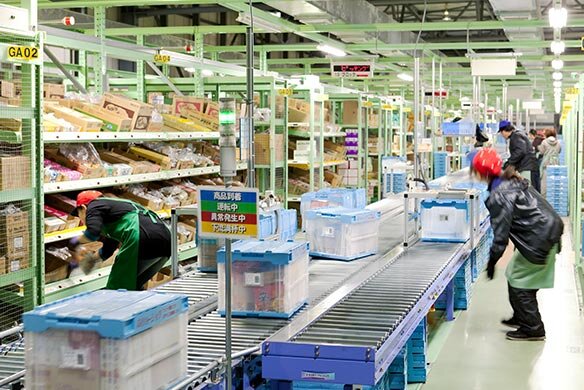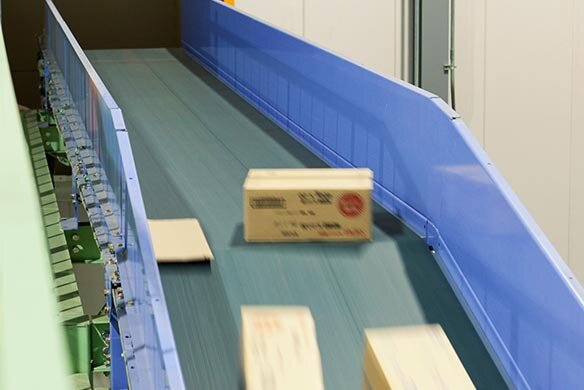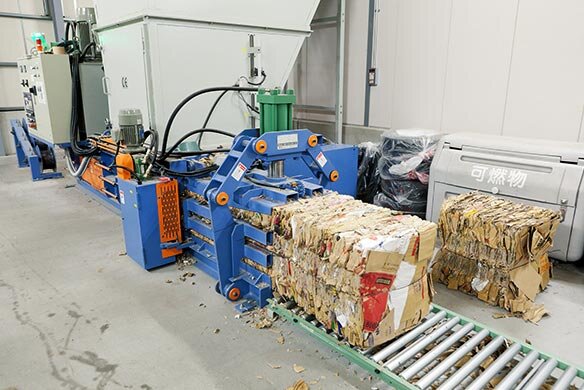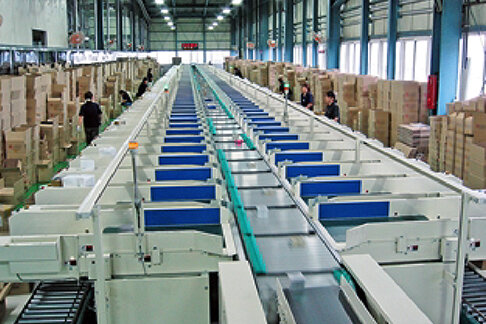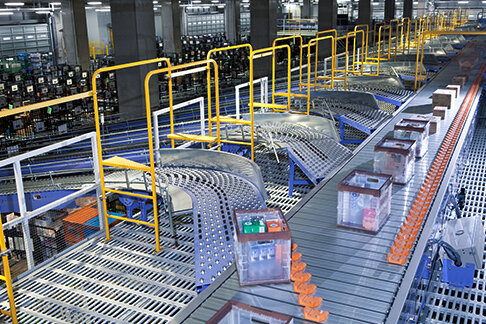Retail/Wholesale
Mitsubishi Shokuhin Inc. (Construction of a Warehousing/Distribution Center)
Mr. Hidetaka Hosoda (Tohoku Logistics Department, Tohoku SDC Tochigi DC Director)
Challenges
- Shorten lead time
- Reduce of store inventory
- Reduce effort required by stores
Results
- Shortened sorting labor hours by implementing an automated sorting solution.
- Kept inventory held at stores to a minimum by putting a just-in-time delivery system in place.
- Deliveries are prepared and by category or store aisle, greatly reducing the effort at the store.
- Kept collapsible totes below a fixed weight for easier handling by workers.
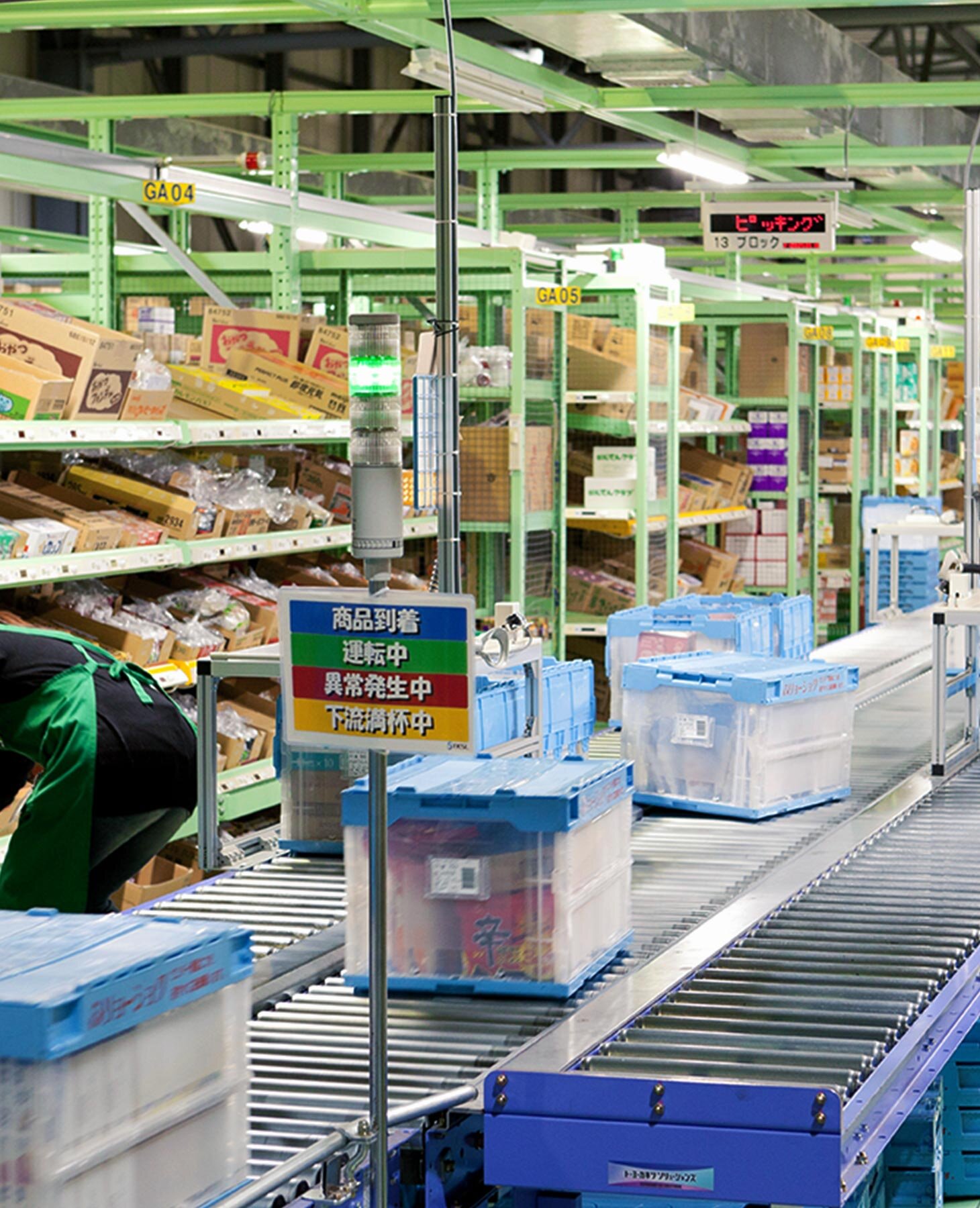
Background: Our goal was to support and foster the efforts of large supermarkets from Tohoku region to expand into the northern Kanto region.
Background:
Our goal was to support and foster the efforts of large supermarkets from Tohoku region to expand into the northern Kanto region.
The Kita-Kanto Grocery Center is the overall general distribution center for dry goods at ambient temperature that will support the expansion of Tohoku supermarkets into Kita-Kanto region. In addition to supporting the efforts of stores to expand their network south, the new facility also made it possible to handle items that could not be handled before such as household items and some clothing. Furthermore, lead times in grocery distribution were reduced so stores can hold less inventory while optimizing the category of products handled. Also, electronic data interchange of all documentation reduced back-of-store work.

Reasons We Chose Toyo Kanetsu Solutions:Toyo Kanetsu tailored a solution to our specific needs.
Reasons We Chose Toyo Kanetsu Solutions:
Toyo Kanetsu tailored a solution to our specific needs.
In the past, the Miyagi/Fukushima Grocery Center operated by Mitsubishi was able to expand service level to processed foods, alcoholic beverages and confectionaries, but now, by also handling some non-grocery items, we are able to offer a more options to the customer and gain some synergy and save space by using lines for multiple categories. With a smaller lead time, it was absolutely essentially that we connected with customers via EDI in order to understand inventory needs in real time. The main reason for selecting Toyo Kanetsu was their ability to understand the total picture with our customers, incorporate the integration of a sorting system via EDI and bring it together in a comprehensive solution. As a wholesaler of food products only, it was an adjustment to adapt our operation to non-food products but because of Toyo Kanetsu’s deep experience with other types of retail operations, they have a clear and demonstrated understanding of retail businesses, which showed in their proposals. We were able to make the adjustment successfully.
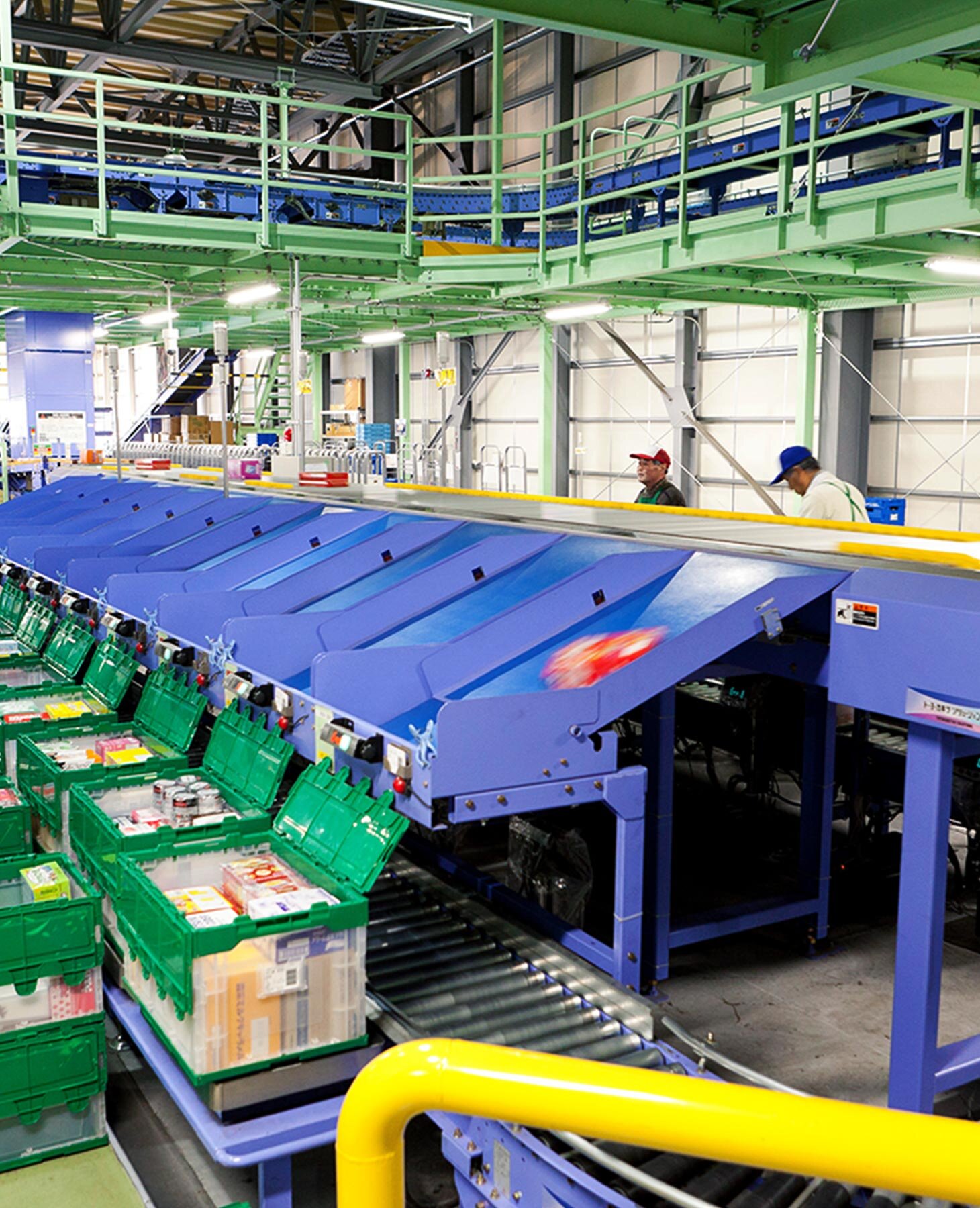
BenefitJust-in-time deliveries and reduced burden on stores.
Benefit
Just-in-time deliveries and reduced burden on stores.
The function of the Parcel Posi-Sorter, our main sorter, is to sort confectionary items by reading the ITF code on the side of the package. By seamlessly using the same sorting equipment, the SCM label on top of household items and clothing could be read automatically and then the items appropriately sorted to cases or containers. Among other requirements, we did not want the changes in the system to place any additional burden on cross-dock, transfer customers. Furthermore, we wanted the barcode reading system to match the application and capture product shape. Finally, we wanted to commonize the use of equipment so we could maximize use of space.
The Mini-Posi Sorter sorted confectionary items per category and placed it in collapsible containers while the main sorter sortered material based on the destination store. To reduce the burden on workers, we placed a scale under the collapsible tote that is being filled in order to keep the weight of a tote from becoming too heavy. If the collapsible tote is too heavy, it is difficult to handle and creates a burden for the store employees.
For regular stocked food items and alcohol, single picking is done at the digital picking station with items per category fed to the collapsible container and then sorter to the store destination on the main sorter line.
Because the design maximized the capacity of the main sorter at a preplanned time schedule, the desired products could be delivered to the destination at the desired time and grouped by category and aisle on a just-tin-time basis. This led to a significant improvement of work required by store employees.
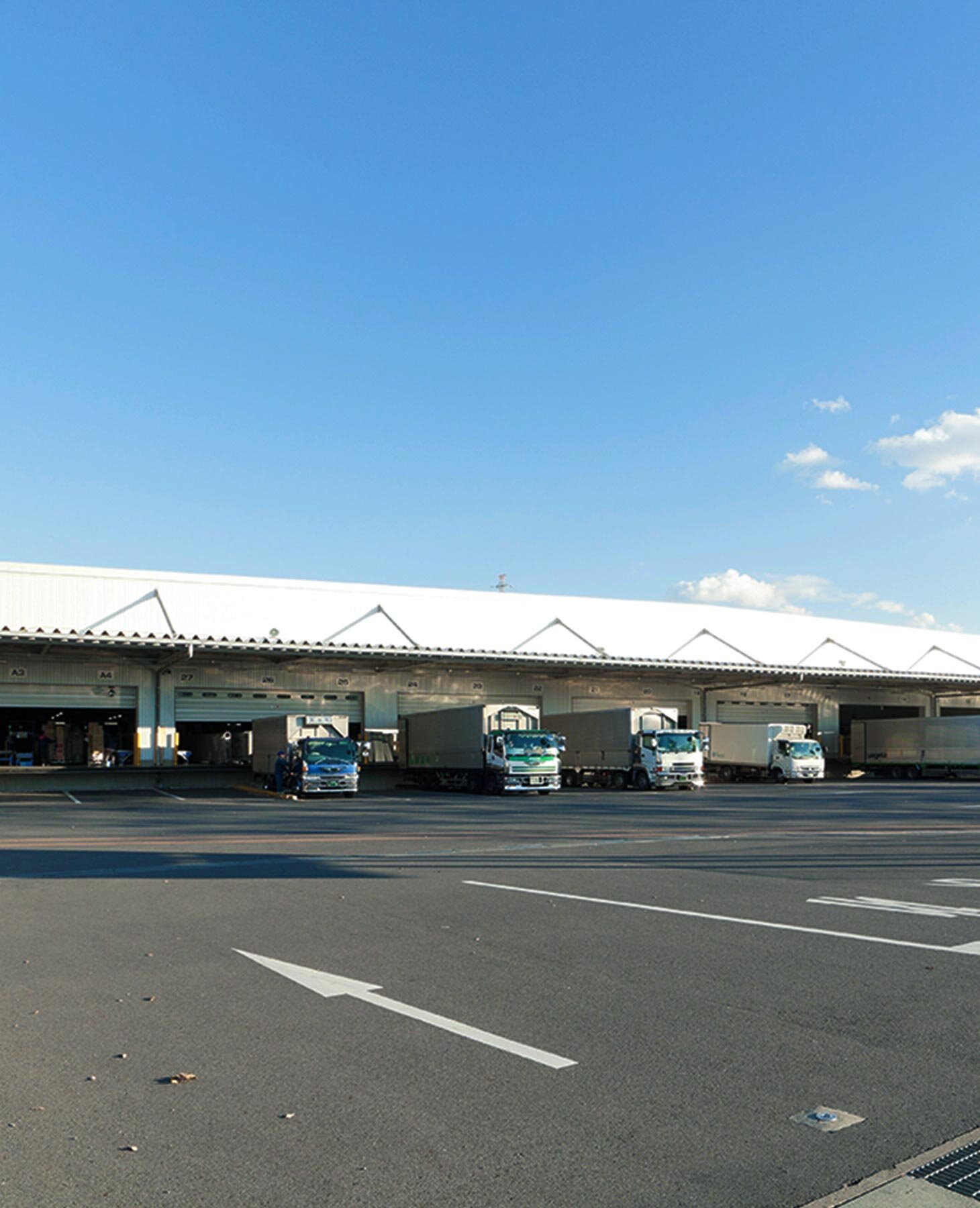
What’s Next?With this center as a model for our strategy going forward, we will continue to push for more progress in the future.
What’s Next?
With this center as a model for our strategy going forward, we will continue to push for more progress in the future.
The Kita-Kanto Grocery Center represents our strategic model to incorporate non-food items and improve store operations. We believe that it was the operational experience and understanding of Toyo Kanetsu as well as the integration to our WMS and connections to customers via EDI that made this implementation succesful. This center set the pattern for converting other centers to general merchandise distribution centers in the future.
* Source: Based on an interview conducted December, 2012. Data, organizational departments and personal names appear as they were at time of interview.
Products and Services Introduced
